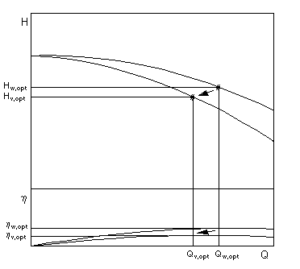Non-Newtonian Fluids
This is thus indicated that there is no line coherence between deformation and shear tensors and that the viscosity rate is time-related.
Non-Newtonian flow characteristics can be observed with the following fluids:
- gaseous soot in oil varnish
- cereal corn suspensions in water
- waste water sludgesewage
- toothpaste
- mortar
- soap solutions
Examples:
Thixotropic characteristics can be observed on numerous kinds of varnishes and lacquers, that means the viscosity is time-related. On stirring with constant angular velocity a rather great resistance is being experienced at first, whilst after a time the viscosity becomes noticeable less, tending towards its lower limits.
Plastic and pseudoplastic characteristics can be observed on many industrial sludge’s e.g. suspensions of lime (mortar) and chalk (toothpaste). Below the shear rate (flow limit)they behave like solid bodies and above as fluids.
Colloidal fluids, such as caoutchouc or solution of soap in water, behave like thixotropic fluids but will not recover their original viscosity when agitation is stopped. The viscosity of such fluids decreases as agitation or shear rate is increased. The reverse (dilettante) characteristic scan be observed on some high-concentrated suspensions., their viscosity increases with increasing agitation or shear velocity rate.
Both the pump curves and the classical methods for calculation of the pipe friction loss assume a constant viscosity and are not valid for non-Newtonian fluids. Depending on the flow behaviour of the pumped medium, they can at best be used as an approximation. For many non-Newtonian media, there are therefore special calculation or approximation methods for sizing and selection.



